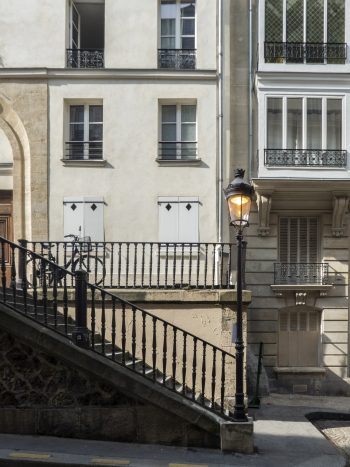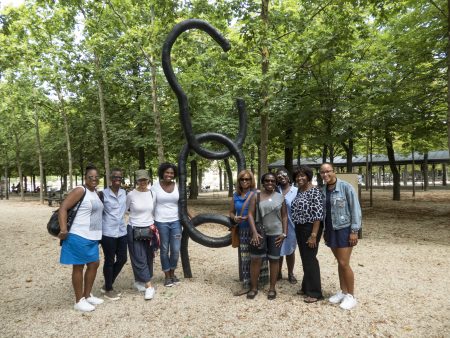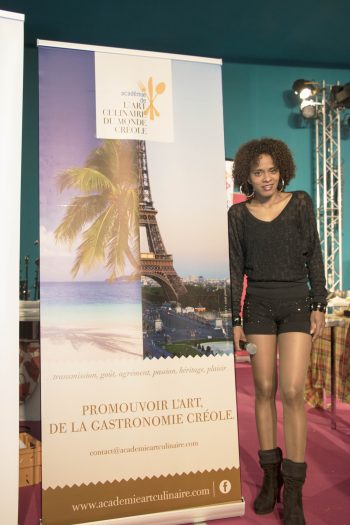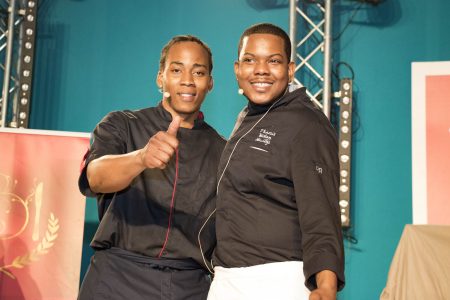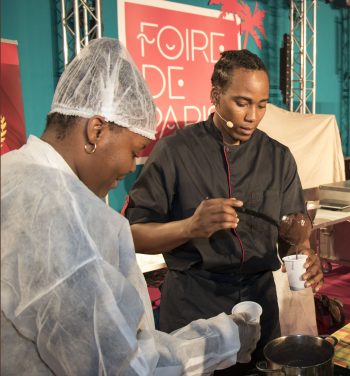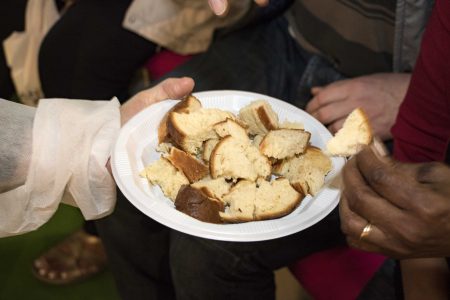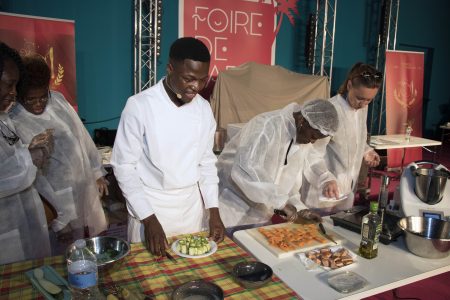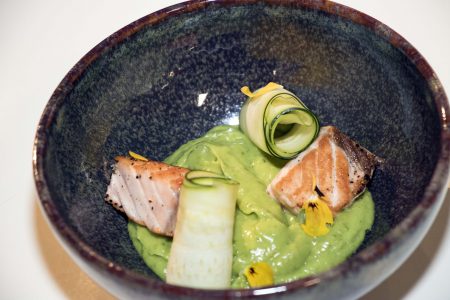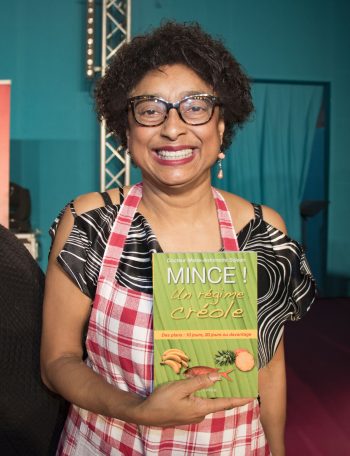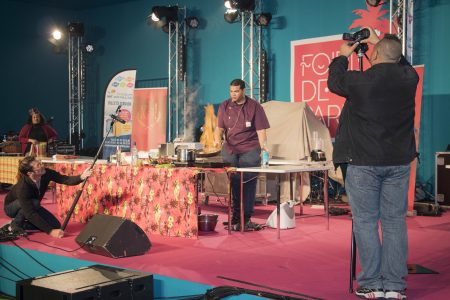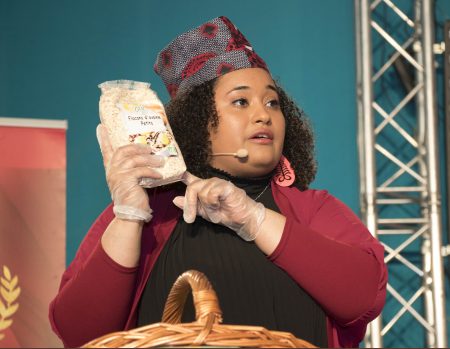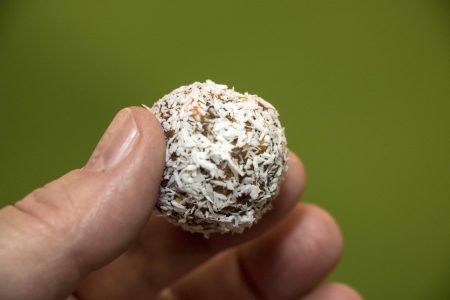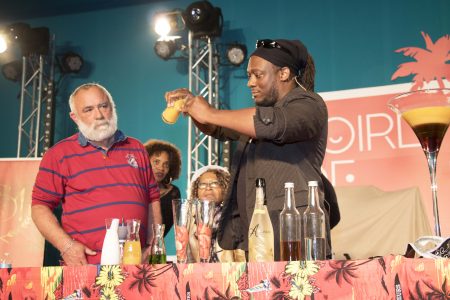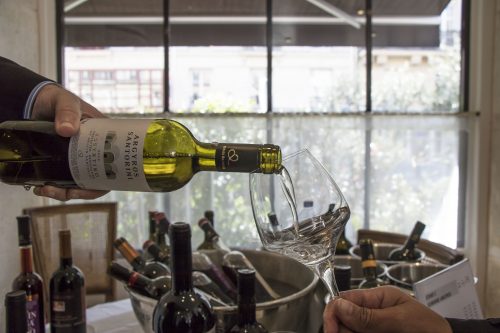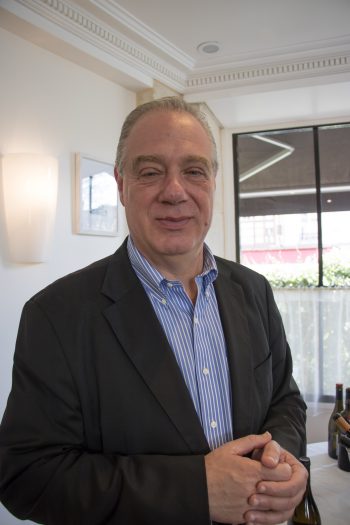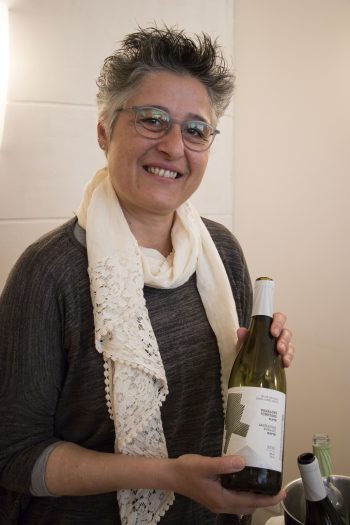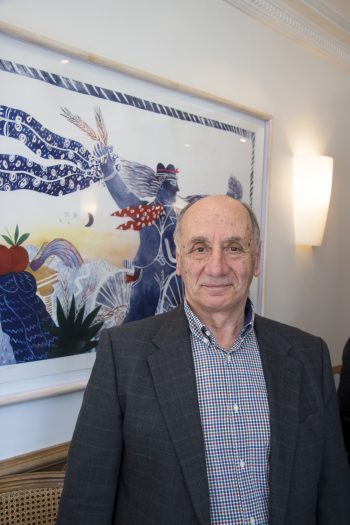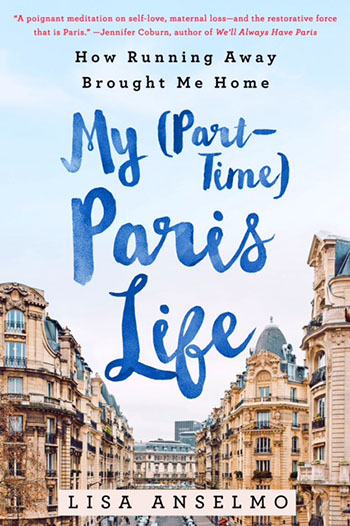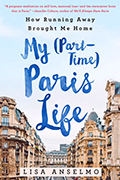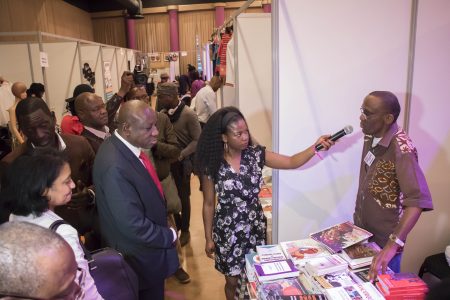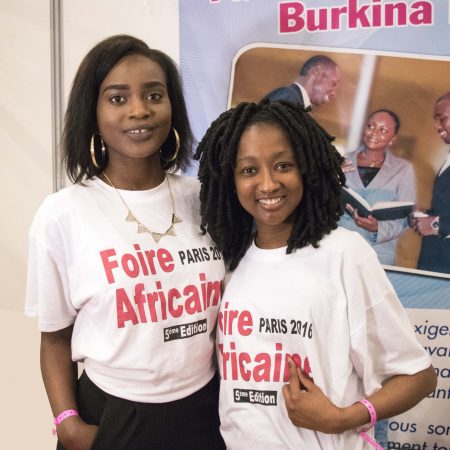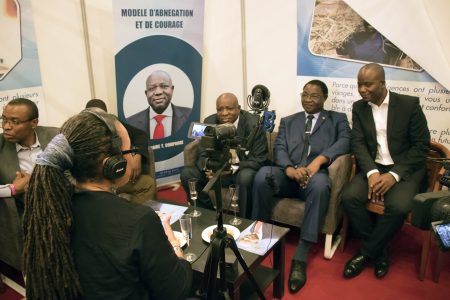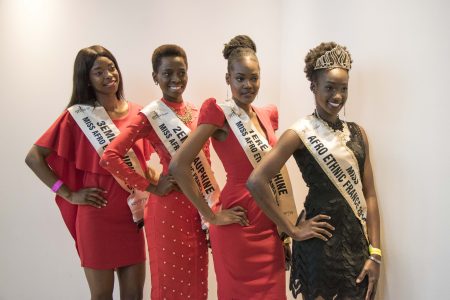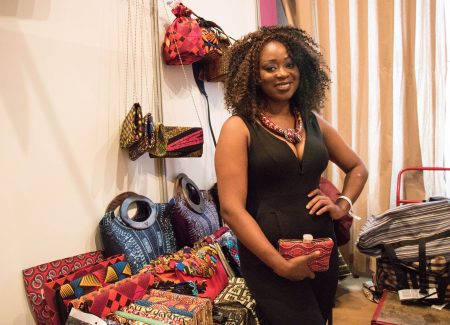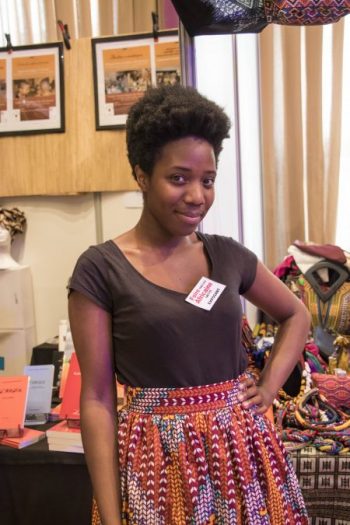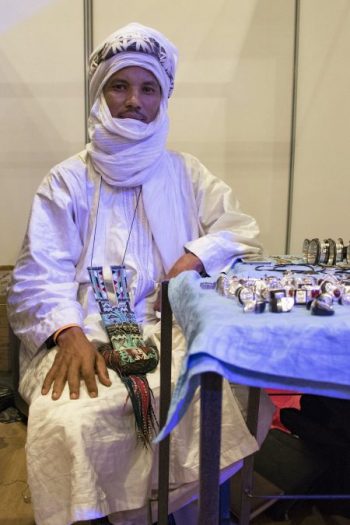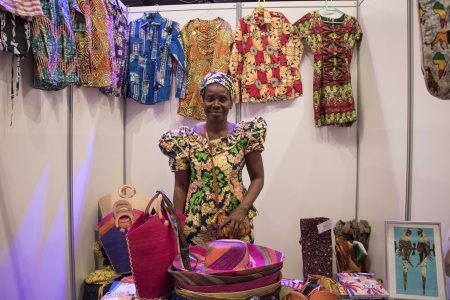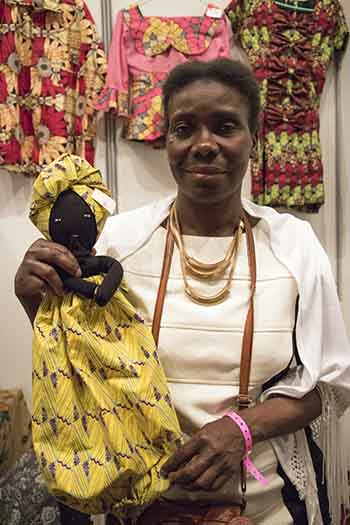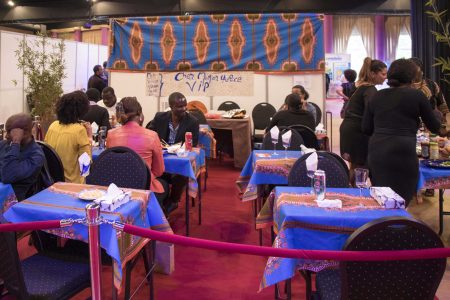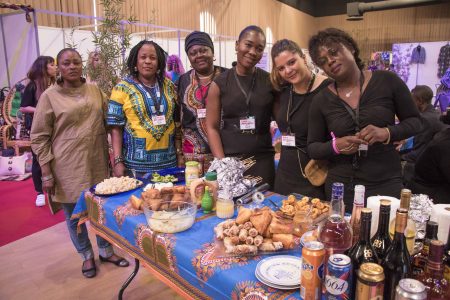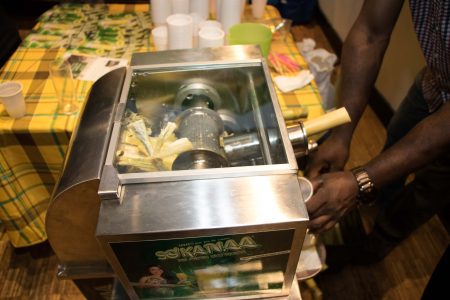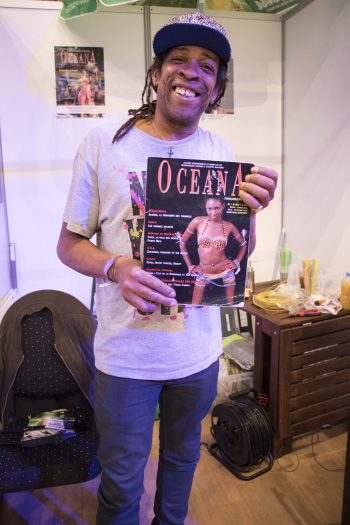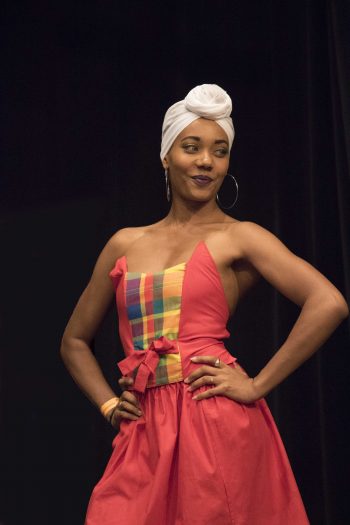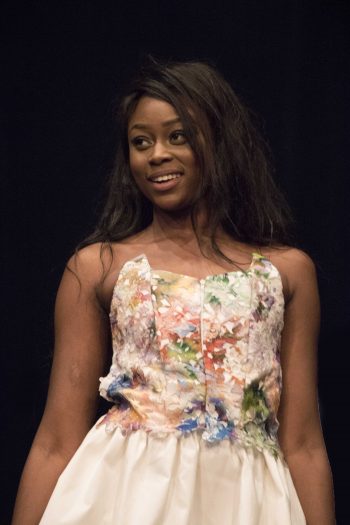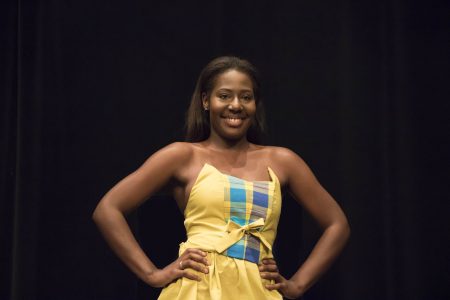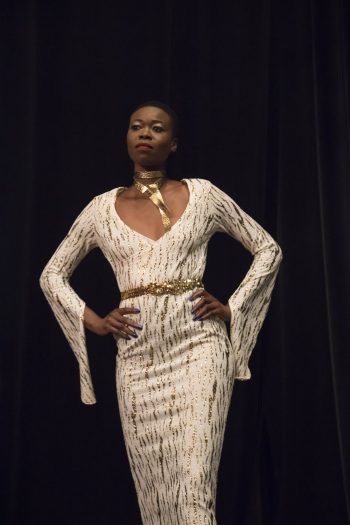I passed by this street lamp on rue Malebranche on my way to meet clients for a Black History in and around the Luxembourg Garden walk. Noticing that the lamp was still on, even though the sun shone brightly, I took a picture of it.
Street Lamp on Rue Malebranche
July 10th, 2017Black History in and around the Luxembourg Garden – Our Open Walking Tour
July 9th, 2017This morning opened with sunny weather and I was glad that the threat of rain had passed. Everyone arrived at the starting point in time for us to begin on schedule — there were four groups from various parts of the United States, including Miami and Washington D.C., plus Tatiana Balabanis, a Wells International Foundation intern, for a total of nine persons.
For much of the tour, I was able to find places for the clients to sit in shady spots while I gave my presentation. Consequently, by the end of the two-hour walk, I think that most of them still had energy to pursue whatever activities they had planned for the rest of the day.
I enjoyed chatting with these women. I learned that one is a judge of a high court, another is a veterinarian, and a third is professor of psychology at a university.
A good time was had by all!
Interested in taking a walk to explore African-American history in the City of Light? For a private group tour, contact us at least six weeks in advance of your arrival date in Paris. To join an open group tour, register at least two days prior to the date of the scheduled walk.
Journée de la Gastronomie Créole at the Foire de Paris
May 9th, 2017Last Thursday, I saw a fascinating demonstration of Creole cuisine at the annual Paris Fair. Sponsored by the Académie de l’Art Culinaire du Monde Créole, various local chefs participated in the all-day event.
Laura, master of ceremonies of the event, provided lively commentary as the chefs demonstrated their cooking skills on stage.
To prepare Pain au beurre et Chocolat martiniquais, two chefs divided up the work. Chef Tristan Tharsis prepared the hot chocolate and Chef Yannis Artigny prepared the bread. I got a chance to taste both. The hot chocolate was thick and rich and the bread was soft and buttery. What a great combination for breakfast or for a mid-afternoon snack! In Martinique, they are served together for special occasions, such as weddings.
Chef Elis Bond prepared fairly elaborate dishes of Afro-Caribbean fusion cuisine. In the photograph above, he is preparing to arrange the ingredients in small bowls, which volunteers will distribute to members of the audience.
Nutritionist Dr. Marie-Antoinette Séjean demonstrated tips for light and healthy Creole cooking. In the photograph above, she holds the book that she wrote on the subject.
Chef Xavier Guillaume Sivager prepared a flaming banana dish called Croustillant de Banane au lard.
Chef Ayaba prepared Boules d’énergie gourmandes Kâ, consisting of ground nuts, dates, and other ingredients rolled into balls and coated with shredded coconut. I got to taste several different kinds. Yum!
And finally, Chef Stéphone Sorbon showed how to make exotic cocktails.
A good time was had by all!
Other chefs who participated in the culinary event (but whose photographs are not shown here) are Béatrice Fabignon, who prepared seafood dishes, and Vanessa Kichenin, who prepared lentil fritters.
Tasting Wines from Greece at Mavrommátis
April 4th, 2017We’ve been to wine tastings at the Greek restaurant Mavrommátis, and we always leave looking forward to their next one. This year, on March 27, thirteen wine producers from Greece presented their wines during a special tasting at this handsome establishment on rue Daubenton in the 5th arrondissement.
Thirteen wine stands — that’s a lot of wine! To limit alcohol intake, a professional taster will swirl the wine in his mouth, do a retro-olfaction trick (a way of tasting the wine without swallowing), and then spit the wine into a special bucket. I like to take small sips and swallow, the way wine is supposed to be drunk. So, to limit our consumption of alcohol, my wife and I chose to visit only three stands and taste no more than three wines at each stand.
We first visited the stand of Stefanos Georgas, where we sipped a crisp white wine called AOC Santorin Assyrtiko Argyros. “The best wine for under $30 according to The New York Times,” Mr. Georgas declared. And I believe him. We then tasted his IGP Cyclades Argyros Atlantis, a very slightly-sweet rosé with an agreeable taste that I couldn’t identify. “Strawberry,” Mr. Georgas said. Finally, we tasted a Vinsanto 20 ans Domain Argyros, a blend of three sun-dried grape varieties, aged in oak casks for seventeen years and in the bottle for three. Intensely sweet, it was like drinking ambrosia. We purchased a bottle of both the Assyrtiko Argyros and the Vinsanto, took them home, and sipped away.
“Let’s go to the far side of the restaurant to see what we can find,” I said to my wife. There, in the corner, we found Effie Kallinikidou, export manager for Lyrarakis. This estate is located on Crete, the largest island of Greece. We tasted IGP Crète Domain Lyrarakis Vilana, a light, delicately-flavored white wine of 100% Vilana grape. I liked it because it was delicately flavored, while my wife would have preferred something with more character. We purchased a bottle and drank it as an apéritif before dinner.
Finally, we walked by the stand of Athanasios S. Parparoussis, who was pouring IGP Achaïa Domain Parparoussis Dons de Dionysas Sideritis. This white wine had a slight licorice flavor and was not too dry for our taste. We both enjoyed this one.
A week after the tasting, the Greek wines that we purchased are almost gone. Happily, we can restock at La Cave Mavrommátis at 47, rue Censier, down the street and around the corner from the restaurant.
Paris as Therapy by Tom Reeves
A Review of My (Part-Time) Paris Life by Lisa Anselmo
October 10th, 2016
A Review of My (Part-Time) Paris Life by Lisa Anselmo
When I first opened this book, I wasn’t sure that I would want to finish it: it seemed to be about a confused woman with a troubled mind, working through her problems. I didn’t think that I’d want to spend my time reading about her sorrows and I didn’t think that I’d have the patience to read to the end to see if she overcame them.
But as I continued to read, I became intrigued with her story: her mother was a desperately unhappy woman who smothered her daughter with love on the one hand, but, on the other, tried to undermine her daughter’s career aspirations when she realized that they would draw her away from home. When the mother finally died of cancer, the daughter was left with a great sense of loss—an overwhelming attachment to the memory of her mother coupled with confusion about how to get on with her life. Was she worthy of aspiring to happiness? This seems to be the overarching question that she needed to resolve, and that is where Paris comes into the story.
The mother and daughter had planned to travel to Paris just before the mother died. After the mother’s death, the daughter traveled to Paris with her sister and, at some point, decided to purchase an apartment there. And for the rest of the book, the daughter, step by hesitant step, transfers her life from New York City to Paris. By the end of the book, she realizes that the challenge of moving to and living in the City of Light has helped her acquire a sense of entitlement to strive for happiness.
The book is full of descriptive detail about Paris. I especially enjoyed reading the descriptions of the neighborhood in which Anselmo purchased a small apartment, the French people she met, and her difficulties in learning the language. I appreciated her descriptions of food, cafés, and restaurants and, near the end of the book, her narrative about the château where she joined a French family for a three-day feast. It all rang true to me, a resident of the French capital for the last twenty-four years and a Francophile since 1975.
This book will appeal to readers who nurture a dream of someday moving to Paris, or to those who simply want to read a good adventure story about a woman who sets out to change her life.
My (Part-Time) Paris Life by Lisa Anselmo is available on Amazon.
Tom Reeves is the author of Dining Out in Paris – What You Need to Know Before You Get to the City of Light.
La Foire Africaine – Part VI – Behind the Scenes
June 14th, 2016Following the opening ceremony on Friday evening, master of ceremonies Daffirma Ibamu escorted dignitaries around the exhibition hall to meet the exhibitors.
In the photograph above, Madame Ibamu holds the microphone while a bookseller talks about his books with Appolinaire Timpiga Compaoré, the major sponsor of the faire.
While I was walking around the exhibition hall on Sunday, I ran into Fofo Forey Fumey, a photojournalist whom I met at a recent photo exhibition. Fofo guided me to a press conference that was taking place in a private area where journalist Mica Manquat was interviewing dignitaries.
Two young women (pictured above) acting as hostesses greeted me in the press room. Then, I turned my attention to the conference that was taking place.
In the photograph above, Mica (wearing earphones) poses some questions for Appolinaire Timpiga Compaoré (in the center, to the right of the poster).
As well as her work as a journalist, Mica publishes a blog (in French) about Creole culture in Paris.
I didn’t stay for the closing ceremony on Sunday evening, but as I was leaving I stepped into the hall and was greeted by the lovely sight of four women who had won honors at a recent Miss Afro-Ethnic France pageant.
Acetou Camara of the Soninké community (on the right) is the winner of the title Miss Afro-Ethnic France.
Thanks to Astou Arnould, public relations specialist, who helped me identify many of the people whom I photographed!
La Foire Africaine – Part V – Fashion and Accessories
June 11th, 2016I stopped at a stand that was selling pendant earrings from Ghana and Kenya. On display was beautiful jewelry made from banana leaves (Ghana), and coconut shells and zébu horns (Kenya).
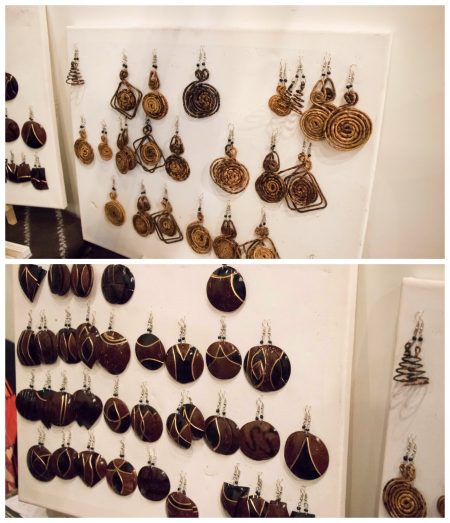
Pendant Earrings by Noor Art
Top: Earrings made from banana leaves
Bottom: Earrings made from coconut shells
Photograph by www.DiscoverParis.net
Abdel Nasser Diallo from Guinea told me that he makes the rounds of exhibitions to sell his products. Later, I learned that he also exhibits at pop-up stores. His products can be viewed on-line at the following link: https://www.instagram.com/noorart.gh/.
And I met Samiratou Tabé at another stand. Before launching a career as a fashion designer, Samiratou, who hails from Benin, studied economics and political science at the University of Montreal.
Samiratou’s apparel can be viewed here: https://www.instagram.com/yourodam/. I learned that the name of her company, Ô’dam, means “pretty” in the Fodo language, a dialect in the north of Benin.
Axelle, pictured above, was modeling one of Samiratou’s creations.
Next…behind-the-scene photos of the fair.
An African Fair in Paris – Part IV – Vendors and Exhibitors
June 8th, 2016The first stand I visited exhibited hand-crafted jewelry by Albassane Ag Agaly, a member of the Touareg ethnic group in Mali. He received a certificate of recognition for his jewelry from UNESCO in 2000.
Next, I came upon Esther, from the Central African Republic. She was selling a number of items: hats made in Madagascar from raffia; bags made from raffia by prisoners in Cameroon; shirts from the Central African Republic. Esther was selling these items to raise money and awareness for the non-governmental organization Femmes en Danger, “whose objective is to fight against the impunity of perpetrators of violence against women in times of peace as well as in times of war in Africa in general and in Central Africa.” (My translation.)
I returned to Esther’s stand on Sunday afternoon, and she showed me more hand-crafted products that had not been on display on Friday. In the photographs above, she shows a necklace made from the fruit of bamboo, which is called “pierres végétales” (vegetable rocks) and a doll, both made in the Central African Republic.
Next…more vendors and exhibitors.
An African Fair in Paris – Part III – Food and Beverage
June 7th, 2016I arrived at the exhibition hall around 3:00 p.m. on Friday, May 27 and decided that I should get lunch before walking around to look at the exhibits. I saw that the food stand called Chez Maman Alice had a nice area for sit-down dining, so I decided to try the food there.
One of the women invited me to take a table, so I entered the dining area and made myself comfortable. I ordered two beef kabobs, three beef samosas, a serving of rice, and a green salad. I also ordered a Heineken beer, which was served in a 67cl size can. It was a delicious meal, and the price came to only 11€.
I took a photo of Maman Alice and her staff. From left to right are Marie, Adele, Maman Alice, Frida, Maroua, and Youdi. All but Maroua hail from the Democratic Republic of the Congo. Maroua is Moroccan.
With a full belly, I was ready to explore the exhibition.
I came upon D’Jackson Suriam from Martinique and Christophe Luijer from Holland, where they were selling fresh-pressed juice from the sugar cane. Christophe told me that he invented the machine that crushes a stick of sugar cane to extract its sweet juice. I tried a cup and found it to be wonderfully refreshing. Christophe calls his company So’Kanna.
D’Jackson is Christope’s partner at So’Kanna. He is also editor and director of a new international culture and lifestyle magazine called Océana.
Next…vendors and exhibitors at the fair.
An African Fair in Paris – Part II – The Fashion Show
June 5th, 2016Following the music and dancing, six models exhibited the ready-to-wear clothing of Martinican fashion designer Mireille Barclais.
Cressylia, who hails from Martinique, was elected Première Dauphine at the Miss Multicolor France pageant this year. Read more about her (in French) here.
Balbina, who hails from Togo, was elected Miss Togo France Europe in 2015. Read more about her here.
Dialel hails from Senegal. She was finalist in the Miss Senegal France pageant for 2016.
Koudia hails from Senegal.
Cressylia’s daughter and son took the stage to model children’s wear.
At the end of the fashion show, Mireille Barclais came on stage to acknowledge the audience’s appreciation of her beautiful clothes.
Next…food and beverage at the fair.

